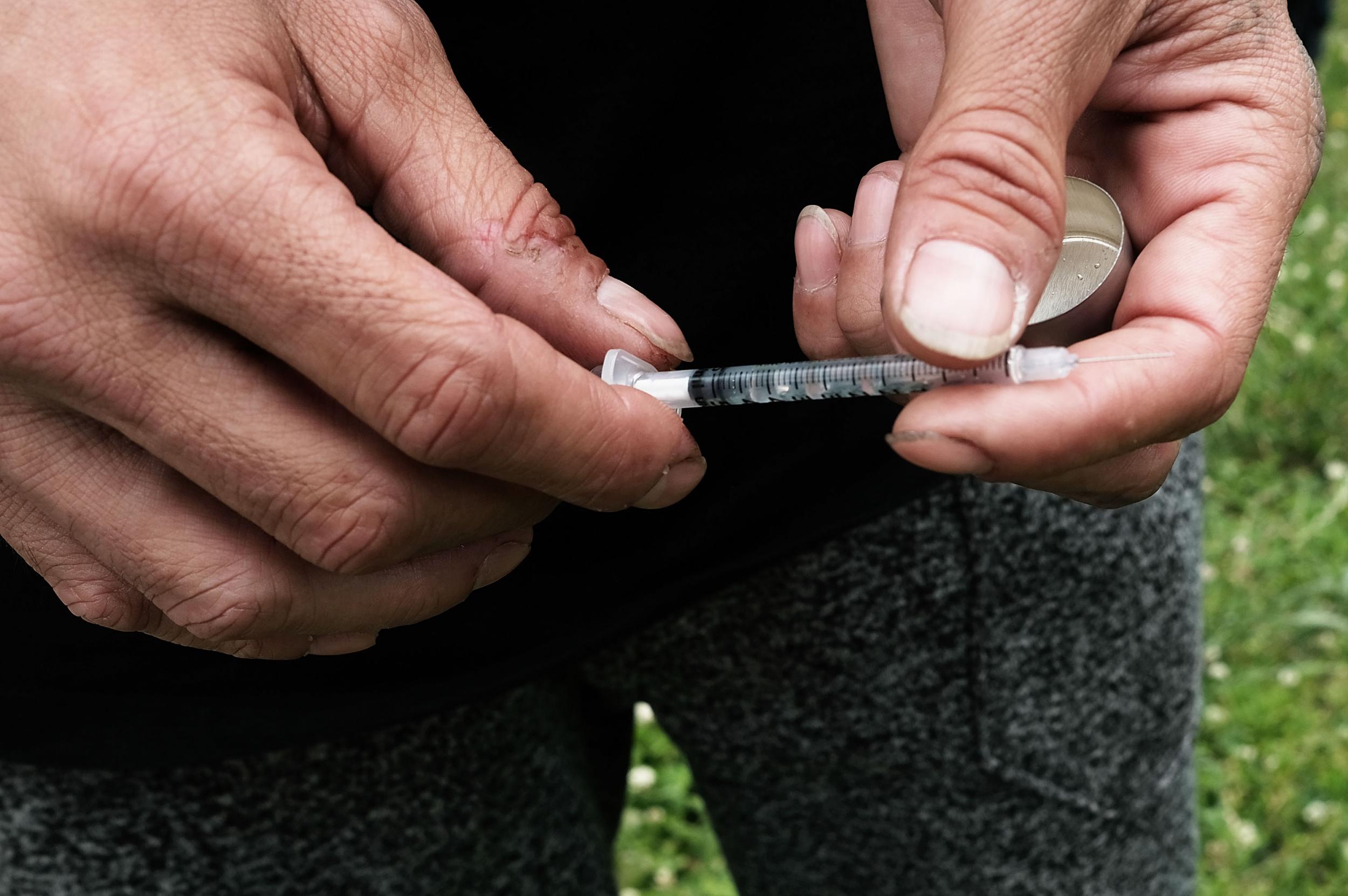America pulls opiod from market for first time amid crisis echoing HIV and crack epidemics
The epidemic is impacting people all across the country, and in significant numbers

Your support helps us to tell the story
From reproductive rights to climate change to Big Tech, The Independent is on the ground when the story is developing. Whether it's investigating the financials of Elon Musk's pro-Trump PAC or producing our latest documentary, 'The A Word', which shines a light on the American women fighting for reproductive rights, we know how important it is to parse out the facts from the messaging.
At such a critical moment in US history, we need reporters on the ground. Your donation allows us to keep sending journalists to speak to both sides of the story.
The Independent is trusted by Americans across the entire political spectrum. And unlike many other quality news outlets, we choose not to lock Americans out of our reporting and analysis with paywalls. We believe quality journalism should be available to everyone, paid for by those who can afford it.
Your support makes all the difference.The US Food and Drug Administration is making an unprecedented move, and has ordered a drug manufacturer to pull a pain killer from shelves for the first time as the nation’s opioid crisis escalates to terrifying levels.
The administration ordered the drug company Endo to pull the extended release drug Opana ER from pharmacies because people have been smashing up the drug and injecting it. The drug company is pushing back, but the FDA is threatening to withdraw approval if the drug isn’t voluntarily pulled from the market.
The unprecedented decision comes as the opioid crisis in America is killing more and more young Americans. A recent analysis of mortality rates across the country by the Washington Post shows that a decline in deaths since the 1990s reversed around 2010 when prescription drug abuse really began taking its toll.
Since 2010, mortality rates in every state have risen.
While most of the media coverage of the issue concerns young, poor, white people, the crisis has impacted all demographics. Deaths among African Americans have jumped 4 percent, and deaths among Hispanic people have jumped seven percent. Native American populations have seen an 18 percent increase, a higher rate than the 16 percent jump white people saw. Native Americans hadn’t enjoyed a drop or relative stagnation of deaths in the past two decades, however. Asian Americans have seen a slight increase of 3 percent, but it is statistically insignificant.
The crisis, in other words, is seeing a statistical uptick in mortality rates that shadow the number of deaths in the 1980s and 1990s when HIV ravaged communities alongside the crack-cocaine epidemic.
“What it reflects is an out-of-control epidemic right now,” Josh Sharfstein, director of Bloomber American Health Initiative at Johns Hopkins, told the Washington Post. “It’s affecting the economy. It’s affecting the entire community. This is an absolute call to action for public health.”
Join our commenting forum
Join thought-provoking conversations, follow other Independent readers and see their replies
Comments